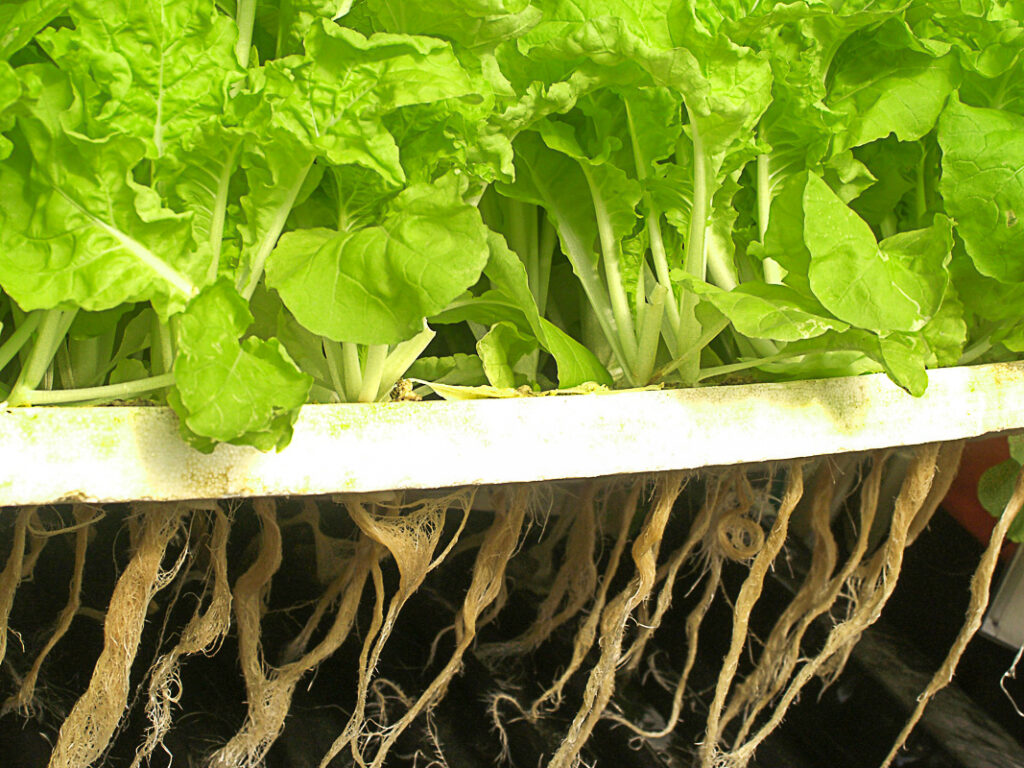With the rise in home gardening, many gardeners are turning to hydroponic to grow their vegetables and herbs. An indoor hydroponic system not only produces a higher yield compared to soil growing, but they are easy to use and plants grow fast. In this post, we’ll explore the different indoor hydroponic systems and which crops grow the best.
*This post contains compensated links. Find more info in my DISCLAIMER. As an Amazon Associate, I earn from qualifying purchases.
Want to start a hydroponic garden at home easily? Check out our recommendations for Best Hydroponics Starter Kits for Beginners.
Why Use An Indoor Hydroponic System?
Hydroponic growing is a modern marvel. It allows home gardeners, regardless of how much space they have, to easily grow vegetables and herbs. Thanks to the process of using a nutrient-rich water solution instead of soil, a home garden can be set up anywhere.
Hydroponics plants grow very fast compared to those grown in soil. It’s not uncommon to get double the yield in one growing season of the crop. Crops like lettuce can be harvested twice as fast in hydroponics, compared to ground gardening. Additionally, indoor hydroponics use less water to grow, which is very good for the environment.
Other benefits to an indoor hydroponic system include:
- Grow Anywhere: regardless of the climate, hydroponic plants can be grown indoors and outdoors
- Pest Control: Damage from ground pests like rabbits, squirrels, and insects is limited
- Easier to Maintain: Little to no weeding required plus plants don’t need to compete with weeds for vital oxygen and nutrients.
How Do You Set Up An Indoor Hydroponic Grow System At Home?
For beginners, it’s best to go for a system with fewer moving parts and growth modules. This will easily be a success and ensures you use fewer funds so that you can upgrade to bigger and better systems in the future.
All you need are support structures, growing media, plants, water pump, reservoir, tubing, PH control, light, water, and nutrient solution. An indoor hydroponic garden kit can be purchased and comes all set with the supplies you need.
Beginners are advised to start with live plants or seedlings rather than using seeds. Before using live plants, ensure you wash off all the soil from the roots so that they do not contaminate the solution. Get support structures such as baskets and wires for roots to hang down. You also need a container for the roots to hang in.

In The Home Stretch
Store the water and nutrient solution in a reservoir. If you are using a deep water culture system, the root basin and water reservoir are in the same space. Depending on the system you are using, you may or may not need a growing medium. Vermiculite, gravel, and perlite do well in these systems, should you need one.
You will need tubing to channel water and nutrients from the reservoir to the root basin and back again. The tubing should be of a good diameter to connect with the water pump and should not bend to interfere with the flow of water.
You need a high-quality nutrient solution that is perfect for whichever plants you are growing. As a gardening expert, you can choose to make your solutions. Fresh rainwater or bottled spring water does perfectly well. Tap water may have detrimental PH levels and may hold undesirable minerals. pH controls such as P testing kits are needed to monitor the pH levels of the solution.
Position your plants in a spot that receives at least six hours of full sunlight daily. If this is not achieved, you can use grow lights to boost the lighting. Upon completion, you will have a nice-looking indoor hydroponic garden tower with an appealing look.
Best Crops To Grow With An Indoor Hydroponic System At Home
There’s nearly an endless supply of vegetables, herbs, and house plants you can grow using an indoor hydroponic system. Here are just a few examples of some of the most popular choices.
Vegetables
- Spinach
- Bok Choy
- Lettuce
- Tomato
- Cucumber
Herbs
- Basil
- Oregano
- Mint
- Sage
- Rosemary
House Plants
- Spider Plant
- Philodendron
- Devil’s Ivy
- Arrowhead Vine
- Peace Lily
Best Indoor Hydroponic Growing Systems For Home
While the efficiency of indoor hydroponics systems is important, the systems vary in mechanics. In some, the plant roots are continuously suspended in the nutrient solution while in others, the nutrient solution floods the roots infrequently and drains back out. There are other systems where the root zones are sprayed with nutrients regularly.
Ebb And Flow/ Flood And Drain
The Ebb and flow system is further divided into the drain to waste and recirculating. In drain to waste, you need to constantly refill the system with a new nutrient-rich solution. On the other hand, a recirculating system reuses the same nutrient solution hence saves you lots of water. However, you should do recirculation for a given period and when the solution gets diluted and it is topped off.
Deep Water Culture
It is a simple hydroponic system because it lacks intervals. Though an air stone and an air pump are needed to ensure oxygen flows continuously to the plant roots. Otherwise, your plants would easily drown. It is also the best indoor hydroponic system where the plant roots are suspended in the nutrient solution permanently and there is no flood and drain. Expect larger plants with fast growth,
This system can be a little bit pricey when purchasing and maintaining it. You will also require enough space for a bigger system and larger plants.
Aeroponics
This indoor growing system is new and unique. In an aeroponics system, the plant roots are always suspended in the air to allow enough aeration. A nutrient solution is sprayed to the roots periodically in form of spray mists. This means the roots will remain wet with nutrients. It is the best method for starting clones, for growers with many propagation needs, and those who want to grow several small crops.
Hydroponic Drip System
A nutrient solution is dripped to the growing medium for the plants to feed on. You can construct drip emitters for many plants in an effective way to save on costs. They are the ideal systems for commercial growers or gardeners with a small budget looking for the easiest system to construct and maintain.
Nutrient Film Technique
The nutrient solution flows through a channel that slopes downwards. The plant roots are suspended in the nutrient solution and absorb nutrients from it.
Wicking System
The plants sit inside wicking growing medium like perlite or vermiculite. The plants are usually placed in a container just above the nutrient solution tank. A wicking rope then connects the medium to the solution. Nutrients and water are pulled up through the wicking rope as the medium dries out.
Aquaponics
This method is unique because it requires fish. There is a symbiotic or rather mutual beneficial relationship between the fish and the plants in a way that plants feed on the fish waste. This prevents the accumulation of unclean conditions that are harmful to the fish. However, aquaponics is a small system and cannot grow big flowering plants.
FAQs – Setting Up An Indoor Hydroponic System
If you are living in an apartment or have no outdoor space to grow plants, then yes, an indoor hydroponic system is worth it. Thanks to indoor hydroponic systems, growing herbs or vegetables isn’t just for people with loads of space.
If you are limited on space or have no outdoor space, then an indoor hydroponic starter kit is the best for your home. They take up very little room but still produce fresh herbs and vegetables. Best of all, starter kits are ideal for those who’ve never been a home gardener.
